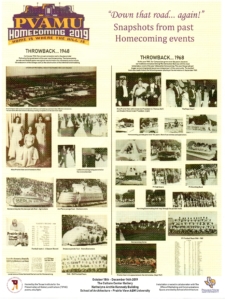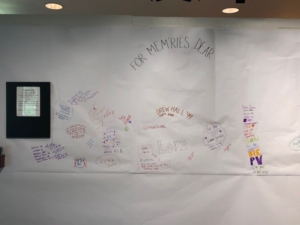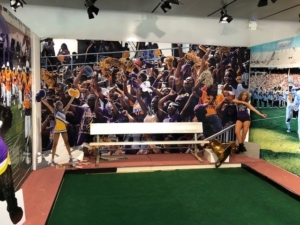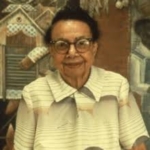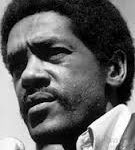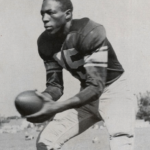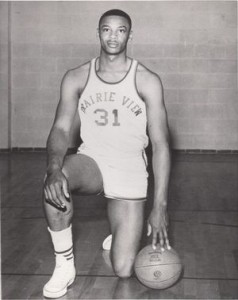The Long Story of East 11th and 12th Streets Takes a Turn
Austin’s historically black neighborhood continues to stand at the crossroads of growth
Photo: Harold McMillan and Greg Smith at Kenny Dorham’s Backyard (Photo by David Brendan Hall)
(Austin Chronicle) Dr. Charles Urdy, at 86, can still remember the names of long-gone nightclubs along East 11th Street. He studied chemistry at Samuel Huston College in the 1950s and spent his evenings hopping from one club to another. “A lot of those places, Charlie’s Playhouse, the Deluxe Hotel, the Victory Grill, they were frequented by students,” he said, ticking off the biggest spots on the street. “I went to all those places all the time. That’s where I met Louis Armstrong – at the Lawson’s Ice Cream Parlor. He was staying at the Deluxe Hotel.”
“The disappointment is [that] no, we didn’t end up with a neighborhood medium-sized grocery store, and pharmacy, and nightlife, and dining options that were actually directed at … the people here in the neighborhood.”– Harold McMillan
The segregated neighborhood that Urdy knew – the historic home of Austin’s African American community – was a city within a city, with strong churches, schools, and black-owned businesses. “It was our world, and most of it was between 11th and 12th street,” said the future five-term City Council member and mayor pro tem.
Urdy moved away from the area after getting a doctorate; he was gone for a decade. “By the time I came back to Austin in ’72, things had really started to deteriorate,” he said. “It was just heartbreaking.” Desegregation, begun in the mid-Sixties, had wrecked black businesses across the country as African Americans began spending money outside their traditional neighborhoods. Businesses closed, the buildings went vacant, and blight set in. “It had gotten to be so bad that folks would not go down 11th Street – it was like a combat zone,” said Urdy. “Some folks were accosted in broad daylight going down the street. All of those little [former] clubs were nothing but havens for drug dealers and prostitutes.”
To keep the buildings from being misused, many were demolished. By the late 1970s, most of the nightclubs Dr. Urdy remembers were torn down, the rubble hauled away. They were empty lots that became, in city of Austin lingo, “parcels.” (more)
Why Earl Campbell Matters
A new biography of ’The Tyler Rose’ demonstrates that the legendary running back’s insistence that he wasn’t a transformative racial figure was too modest by half.
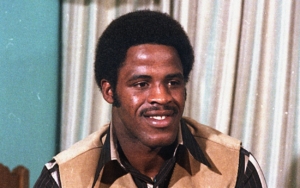 (Texas Monthly) Elmo Wright was exactly the type of recruit Darrell K. Royal needed in 1966. He had only started playing receiver at East Texas’s Sweeny High during his senior year, but he was a natural; he once scored five touchdowns in a game. He had the talent to play anywhere, but he knew what his top choice was. “I’d love to go to the University of Texas,” he told his coach. “I’d like to be the first Afro-American to play there.”
(Texas Monthly) Elmo Wright was exactly the type of recruit Darrell K. Royal needed in 1966. He had only started playing receiver at East Texas’s Sweeny High during his senior year, but he was a natural; he once scored five touchdowns in a game. He had the talent to play anywhere, but he knew what his top choice was. “I’d love to go to the University of Texas,” he told his coach. “I’d like to be the first Afro-American to play there.”
As Asher Price writes in his deeply researched and reported biography, Earl Campbell: Yards After Contact (UT Press), Royal invited Wright to visit Austin and spoke with him in his office. “You’re going to have to be like Jackie Robinson,” the legendary coach told him.
After the meeting, Royal called Wright’s high school coach. “He’s the real deal, grades and everything,” Royal said. “But, unfortunately, at this stage of the game we’re not ready to take that step.” Wright ended up at the University of Houston, where he was named an All-American receiver and, among other things, invented the end zone dance, and then went on to play five seasons in the NFL.
Earl Campbell, as an eleven-year-old living in Tyler when Royal dashed Wright’s dreams, was no stranger to racism either. If Campbell wanted to buy a hamburger at the local diner, he had to get his food to go, served out of the back door. On his way home, he and his brothers often ran, to avoid trouble with white neighbors.
Both the Longhorns football team and the Tyler school system were finally integrated in 1970, sixteen years after Brown v. Board of Education and a few years before Campbell got to join the team from which Wright had been barred. He was, in short, a target of some of the worst prejudice that America had to offer and a witness to the profound changes in race relations that occurred in the middle of the last century. Price, a longtime reporter for the Austin American-Statesman, makes the most of Campbell’s prominence at such a pivotal moment, using Campbell’s experiences to unravel the ugly history of integration in Texas—first in Tyler, then in Austin, and finally in Houston. (more)
 “Down that road…again!”
“Down that road…again!”
For the 2019 PVAMU homecoming events, the TIPHC partnered with the university’s Communications and Marketing Dept. to create an interactive exhibit that celebrates past homecomings and student life at the university. The exhibit opened Saturday (Oct. 19) in the TIPHC Gallery at the School of Architecture and will remain on display until Dec. 14 this year.
The gallery is open from 8-5. For access, contact the TIPHC office, 936-261-9836, or the main office in the School of Architecture, 936-261-9800.
The exhibit displays artifacts and photos from Miss. Prairie View coronations, vintage band uniforms and wall photos, a recreation of the Alumni Hall student gathering area, and a fully adorned dorm room. The displays offer ample “selfie” opportunities where visitors can insert themselves into the exhibits, and there is also a wall where visitors can write about their memories of homecoming and their time on “The Hill.” (Click images to enlarge)
TIPHC Bookshelf
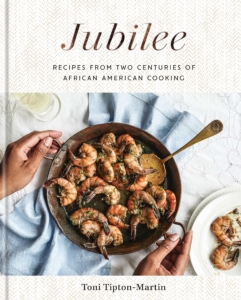 Published scholarship on black history in Texas is growing and we’d like to share with you some suggested readings, both current and past, from some of the preeminent history scholars in Texas and beyond. We invite you to take a look at our bookshelf page – including a featured selection – and check back as the list grows. A different selection will be featured each week. We welcome suggestions and reviews. This week, we offer, “Jubilee, Recipes from Two Centuries of African-American Cooking: A Cookbook,” by Toni Tipton-Martin.
Published scholarship on black history in Texas is growing and we’d like to share with you some suggested readings, both current and past, from some of the preeminent history scholars in Texas and beyond. We invite you to take a look at our bookshelf page – including a featured selection – and check back as the list grows. A different selection will be featured each week. We welcome suggestions and reviews. This week, we offer, “Jubilee, Recipes from Two Centuries of African-American Cooking: A Cookbook,” by Toni Tipton-Martin.
Adapted from historical texts and rare African-American cookbooks, the 125 recipes of Jubilee paint a rich, varied picture of the true history of African-American cooking: a cuisine far beyond soul food.
NAMED ONE OF FALL’S BEST COOKBOOKS BY The New York Times • Bon Appétit • Eater • Food & Wine • Kitchn • Chowhound
Toni Tipton-Martin, the first African-American food editor of a daily American newspaper, is the author of the James Beard Award-winning The Jemima Code, a history of African-American cooking found in–and between–the lines of three centuries’ worth of African-American cookbooks. Tipton-Martin builds on that research in Jubilee, adapting recipes from those historic texts for the modern kitchen. What we find is a world of African-American cuisine–made by enslaved master chefs, free caterers, and black entrepreneurs and culinary stars–that goes far beyond soul food. It’s a cuisine that was developed in the homes of the elite and middle class; that takes inspiration from around the globe; that is a diverse, varied style of cooking that has created much of what we know of as American cuisine.
This Week in Texas Black History
Oct. 22
Christia Daniels Adair, suffragist and civil rights activist, was born on this day in 1893, in Victoria, Texas. A graduate of Prairie View Normal College, Adair was an elementary school teacher in Kingsville where she organized a group of black and white women to acquire voting rights in 1919. She later became one of the first black women to vote in the state’s previously all-white primary. Adair and her husband relocated to Houston where she would become executive secretary for the Houston chapter of the National Association for the Advancement of Colored People. With the NAACP she led campaigns to desegregate the city’s public schools, libraries, transportation, hospitals and other public facilities. In 1952, Adair help found the first Harris County interracial political group, the Harris County Democrats. In 1977, a Houston city park was named for her.
Oct. 22
In 1936, Bobby Seale was born on this day in Dallas. Seale would become a political activist and revolutionist, and in 1966 co-founded (with Huey Newton) and was national chairman of the Black Panther Party. J. Edgar Hoover, Federal Bureau of Investigation director, described the Panthers as “the greatest threat to the internal security of the country. “Seale was also one of the “Chicago Eight” defendants charged with conspiring to incite riots at the 1968 Democratic Party Convention. Seale was charged with 16 counts of contempt of court after repeated outbursts during the trial for which he was bound and gagged. He spent four years in prison. In 1973, he finished second in a run for mayor of Oakland, Ca. Since, Seale has been a community activist and author. Among his several books are his biography, “Seize the Time,” and a cook book, “Barbeque’n with Bobby.”
Oct. 23
On this day in 1955, Dallas native Charlie “Choo-Choo” Brackins played the final minutes of a game against the Cleveland Browns, making him the fourth black quarterback to play in an NFL game, but the first quarterback from a historically black college to play in the league. Brackins attended Lincoln High School in Dallas then starred at Prairie View A&M, leading the Panthers to 33 wins in the 37 games he played. He was a 16th round pick by the Green Bay Packers in the 1955 draft.
Oct. 24
Two historically black Austin institutions of higher education, Samuel Huston College and Tillotson College, merged to form Huston-Tillotson College (now University) on this day in 1952. Tillotson Collegiate and Normal Institute (named after Unitarian minister George Jeffrey Tillotson) first opened its doors in 1881, and Samuel Huston College in 1876 in Dallas, relocating to Austin two years later. The two East Austin schools were less than a mile apart. Huston-Tillotson is a coeducational college of liberal arts and sciences, operated jointly under the auspices of the American Missionary Association of the United Church of Christ and the Board of Education of the United Methodist Church.
Oct. 25
Prairie View and National Basketball Association great Zelmo Beaty was born on this day in 1939 in Hillister (50 miles north of Beaumont). Beaty played during segregation at all-black Scott High School in nearby Woodville. At PV, Beaty led the Panthers to the 1962 NAIA national championship and was named tournament MVP. He averaged 25 points and 20 rebounds during his collegiate career. Though undersized at 6-9 for a center, Beaty was the third overall pick in the 1962 NBA draft by the St. Louis Hawks (now Atlanta), made the 1962-63 NBA All-Rookie Team and was a league All-Star in 1966 and 1968 in an era dominated by centers Wilt Chamberlain and Bill Russell. Beaty jumped to the American Basketball Association and led the Utah Stars to their only championship in 1971. In eight NBA seasons, he averaged 16 points and 11 rebounds a game. He is a member of the National Collegiate Basketball Hall of Fame.
Blog: Ron Goodwin, Ph.D., author, PVAMU history professor
Ron Goodwin is an assistant professor of history at Prairie View A&M University. Even though he was a military “brat,” he still considers San Antonio home. Like his father and brother, Ron joined the U.S. Air Force and while enlisted received his undergraduate degree from Texas Lutheran University in Seguin, Texas. After his honorable discharge, he completed graduate degrees from Texas Southern University. Goodwin’s book, Blacks in Houston, is a pictorial history of Houston’s black community. His most recent book, Remembering the Days of Sorrow, examines the institution of slavery in Texas from the perspective of the New Deal’s Slave Narratives.
Recent Posts
Football is still football
October 14th, 2019
Since we’re into the football season I thought it was time to interject my two cents. I’ve noticed several teams starting black quarterbacks these days. Some because of injury, but others have been under center since training camp. By my count, the first weekend of the National Football League season in September saw nine African…(more)
1960s Revisited
Over the last few years our society has spent a great amount of energy reliving and analyzing the 1960s. Every event – from the deaths of the Kennedy brothers, MLK and Malcolm X, landing on the moon, war protests, and the hippie revolution – has been scrutinized through the microscope of history. The interesting thing about history’s microscope, though, is that it often blots out the nasty and the ugly. The concept of revisionism centers…(more)
Submissions wanted
Historians, scholars, students, lend us your…writings. Help us produce the most comprehensive documentation ever undertaken for the African American experience in Texas. We encourage you to contribute items about people, places, events, issues, politics/legislation, sports, entertainment, religion, etc., as general entries or essays. Our documentation is wide-ranging and diverse, and you may research and write about the subject of your interest or, to start, please consult our list of suggested biographical entries and see submission guidelines. However, all topics must be approved by TIPHC editors before beginning your research/writing.
We welcome your questions or comments. Please contact Michael Hurd, Director of TIPHC, at mdhurd@pvamu.edu.

